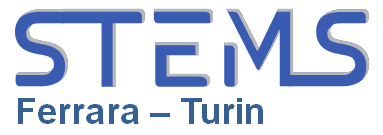   |
The official birth of the Institute for Agricultural and Earthmoving Machines (IMAMOTER) falls in 2002 but it receives the heritage of two previous Institutes: the Institute for Earthmoving Machines and Off-Road Vehicles (CEMOTER) and the Institute for Agricultural Mechanization (IMA).
The background story, in brief, is the following;
The CEMOTER Institute started (with a different name) in the mid sixties as a Center of the National Research Council located in the Polytechnic Institute of Torino, where it stayed until 1981 when it moved to Ferrara and became an independent Institute, with the partial support of external parties (among them the Municipality of Ferrara and the National Association of Earthmoving Machine Manufacturers, i.e. UNACOMA-COMAMOTER);
The IMA Institute started (with a different name) in the early fifties in Torino as an Institute of the National Research Council, with the cooperation of external parties (among them the Municipality of Turin, the University of Torino, and the FIAT company), and underwent successive development stages and expansions. In the late eighties the basic location of the Institute moved to the newly built Research Area of Turin.
It is remarkable that a native link existed at the very beginning between the two research bodies, because the founding ideas of CEMOTER were partly suggested by previous experiences of cooperation with IMA. This is one reason to explain why, though the following life of the two bodies were different and separate, it seemed both reasonable and convenient to propose a joint venture as a result of the reassessment of the CNR Institutes. A second, and more technical, reason was that agricultural and earthmoving machines share a number of research and development topics and are in most cases suitable to benefit from a complementary approach to the design and application problems.
The mission of the Institute can be described in two ways.
Firstly, the official statement of the bylaws which contain a quantitative description list of eight fields of activity:
Innovation of fluid power components and systems;
Unstructured robotics and mechatronics;
Numerical and experimental analysis of structures and fluid fields;
Monitoring and control of noise emission from complex sources;
Analysis and reduction of vibrations and structural noise;
Design of machines and their subsystems;
Mechanization of cultures and its environmental impact;
Certification, standardization and testing of agricultural and earthmoving machines.
The second description is to a certain extent qualitative, and aims at expressing the general perspective or attitude which drive the specific activities and actions of the Institute. From this point of view the mission can be stated as the goal of being a recognized reference point in academic and industrial sense able to promote and disseminate knowledge in key areas which are primarily (but not exclusively) relevant to agricultural and earthmoving machines.